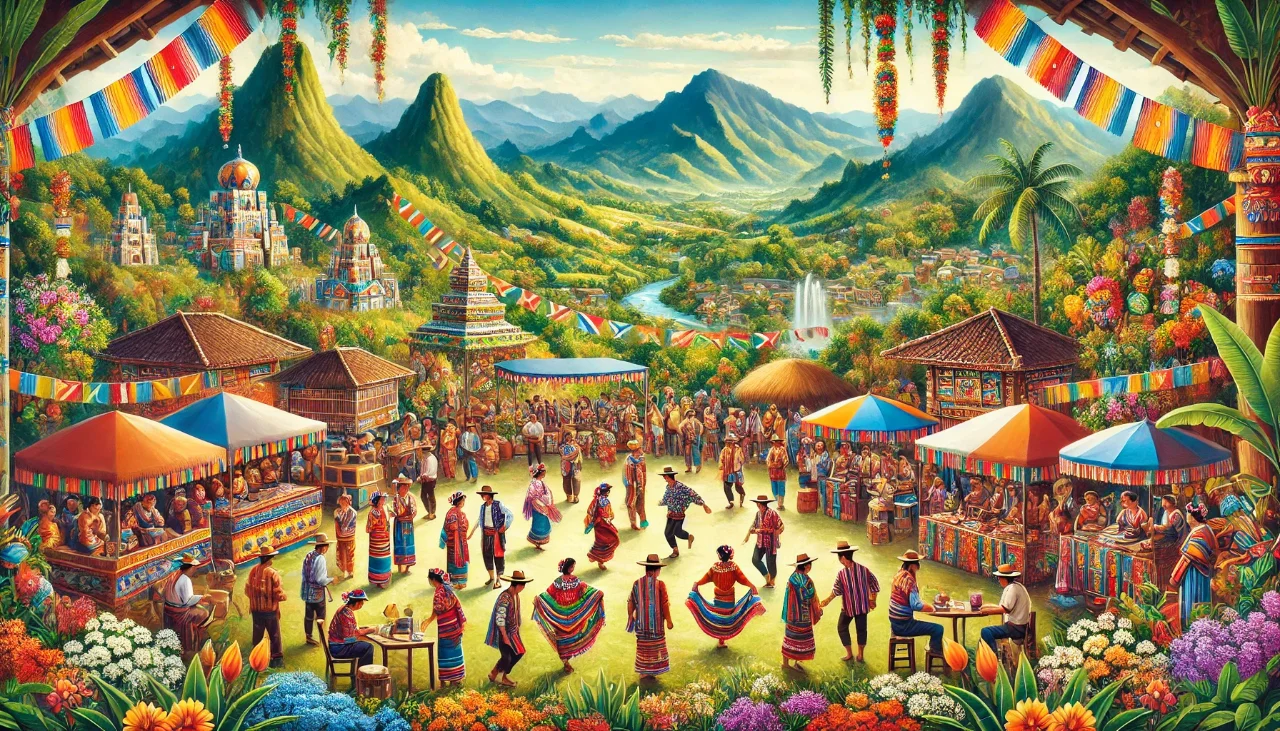The Ciulioneros are a true example of history and heritage, which is evident in their music and dance. Their culture originates from the ancient folklore known as Chulioneros, but has changed over time to adapt to modern society. In their case, the performances are dedicated to the city and its history. The Ciulioneros capture the hearts of the audience with their emotional movements that combine time, past and present into one grandiose creation.
The Origins of the Chulioneros
There is still much to learn about the roots of the Chulioneros. It is clear from their culture that in ancient times, dance was widely used to convey emotions in the community. At first, their performances took place during agricultural celebrations of the year, such as thanksgiving to God and other cultural events. They allowed communities to come together and help participants share stories.
The songs described the magnificent nature, the farmland, the way of life of the people, as well as agricultural activities and religion. Over time, these customs changed and events changed, so the Chulioneros changed their dances to fit in with the present and be relevant, while still respecting their traditional culture.
Ciulioneros: Dance as a Means of Communication
Dance is a way for the Ciulioneros to tell stories, and it has a very deep meaning because it is a way to tell a story. In each dance, such a performance shows feelings, events and stories that have meaning in relation to the past of the community.
The dances performed by the Chulioneros are usually complex designs as they show the happiness, achievements and efforts of the people. Through their movement, they demonstrate and display important things that are valuable cultural principles and practices for them so that people can learn from their history. The Chulioneros believe that through movement, history and culture can be passed on to future generations so that they will always preserve their heritage.
How important is music to the Ciulioneros?
Music is also an important complement to the movement of the Ciulioneros, such as dancing. It cannot be ignored as the inanimate components such as flutes, drums and other stringed instruments are perfectly synchronized with what can be seen.
When performing songs, the size and types of notes played often evoke memories, time or are associated with emotions. Music as an element of art can be seen not only as a background sound but also in the foreground of expression. The call and response style of the Chulioneros is widely used by them as a crowd-puller as this approach evokes a sense of unity and joy.
Ciulioneros Costumes: Redefining Culture
A performance certainly includes costume design and dress code, and in the case of the Ciulioneros, the costumes are also an integral part of the culture. Not all costumes have to be the same, as they also have their own individual characteristics, although together they represent a cultural theme.
These costumes add excitement to the performance, where the dancers become the characters they play. The colors can also indicate the importance the artists attach to design when creating the works of art. With their costumes, the Chulioneros openly affirm their love for Tanzania and its people and visually express the type of people they are.
Ciulioneros and Education: Preserving Culture and Customs
For the Ciulioneros, preserving their heritage is more than just an act; it also involves educating and mobilizing the community. Through workshops and community programs, they strive to actively pass on their experiences to the next generation.
Initiatives like these create a sense of belonging to the young people’s origins and culture and have a positive impact on the practice of traditional lifestyles. In the same way, the Ciulioneros teach music and dance, helping to preserve the stories and values of their ancestors. To this end, education serves to deepen and bring the community closer together and improve cultural identity.
The Future of the Ciulioneros
However, as the world changes, the chulioneros focus on their cultural roots, but do not close their eyes to the changes that have occurred over time: change is necessary in modern realities, as is the relevance of traditions.
For example, the Ciulioneros expand their audience by presenting contemporary artists as contemporary musicians and incorporating modern features into their shows. This dynamic of progress provides De Negritos La Victoria with excellent opportunities to expand the scope of their rich cultural history and support the traditions of other cultures. Through the interaction of old and new forms, the chulioneros do not forget history and pass on traditions to children who promise to live on for future generations.
Conclusion:
Currently, the Ciulioneros are living proof of one of the most creative ways to tell cultural stories: the ability to dance. They perform and communicate with the public, showing their past and their culture, and, without a doubt, they become part of this journey. Today, they are full of time and dance, and the creative universe that the Ciulioneros carry with them nourishes and preserves the traditions of their ancestors. This duality gives birth to advanced civilizations in the future, where children will learn to celebrate their culture and history, regardless of the upcoming social and historical changes.










